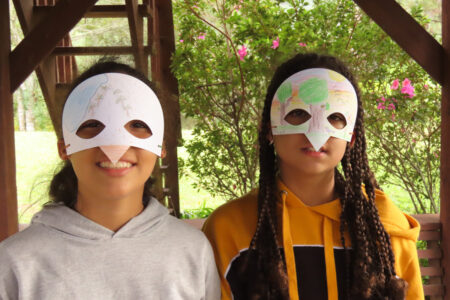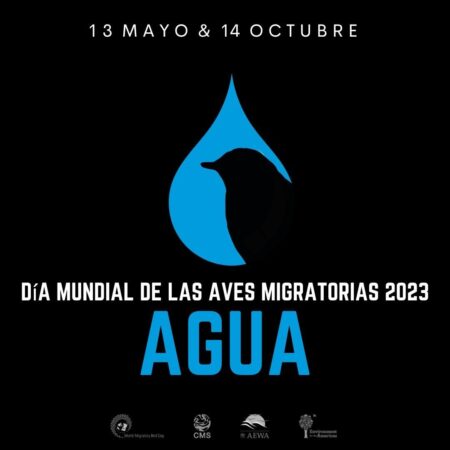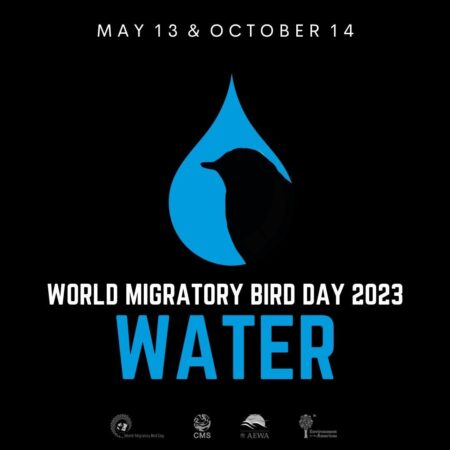
Every year thousands of birds make epic journeys south, visiting our region on the way. Throughout the fall we celebrated these amazing migratory birds in the Caribbean during World Migratory Bird Day. Check out the fun and creative ways that Caribbean organizations got involved from Laura Baboolal, the Caribbean Coordinator, of World Migratory Bird Day for Environment for the Americas.
October 8th, 2022 marked the official date for World Migratory Bird Day (WMBD) in the Caribbean. However, it is celebrated throughout the fall migration season. This year’s theme for WMBD was “Dim the Lights for Birds at Night.”
Light pollution is known to adversely affect wildlife. For migratory birds in particular, it causes disorientation when they fly at night, leading to collisions with buildings. It also interferes with their internal clocks, which they use to time their migrations.
The good news is that more and more cities are taking measures to dim their lights at night, especially during spring and fall migration phases. Find out how the Caribbean is doing its part to ensure the safety of birds during migration.
Since the lifting of COVID-19 restrictions on most islands in the Caribbean, educators were all excited to get back out there hosting in-person WMBD. Activities were held in Anguilla, the Bahamas, Antigua and Barbuda, Puerto Rico, Dominican Republic, Cuba, Bonaire, Montserrat, Grenada, and Trinidad and Tobago, just to name a few.
Here we highlight some of this year’s WMBD activities!
On a learning curve in Puerto Rico
In Puerto Rico several organizations joined together to celebrate WMBD 2022. Víctor Cuevas from US Forest Service, Hilda Morales from Asociación Puertorriqueña de Interpretación and Educación (APIE), Emilio Font from Sociedad Ornitológica Puertorriqueña (SOPI), and Yaritza Bobonis from Fundación Amigos de El Yunque hosted birding walks, talks about the importance of birds, migration, how to observe birds, and other educational activities.
Click on images to enlarge
A swampy experience in Trinidad and Tobago
Across in Trinidad and Tobago, a local school teacher Sabira Ali, who hosts private birding activities for children, celebrated WMBD for the first time with her group of 14 students. The activity included a presentation at the Caroni Swamp Visitor’s Centre about migratory birds followed by an art activity – decorating bird masks. Afterwards, the children enjoyed a casual bird walk at the swamp. The evening was spent checking birds off their checklists. We are also happy to share that the group sent letters to local businesses, requesting that they turn off building lights at night (and explaining how this helps the birds).
Click on images to enlarge
Birding delight in the Dominican Republic
In the Dominican Republic the search was on for migratory birds. At El Jardín Botánico Nacional (The National Botanical Garden) students from el Politécnico Movearte (Movearte Polytechnical School), el Liceo Panamericano (the Pan-American High School) and el Liceo Benito Juárez (the Benito Juárez High School), went birdwatching and were delighted to see the following species: Cape May Warbler, Prairie Warbler, American Redstart, and Merlin.
Maria Paulino, of local environmental NGO Grupo Acción Ecológica, hosted a 3-day workshop entitled “Introducción al Maravilloso Mundo de las Aves” (Introduction to the Wonderful World of Birds) for fifth grade students of Grado del Colegio Doulos (Doulos College) in Jarabacoa. One day was designated Observation Day, where participants could see birds in their natural habitats; these included several migratory species such as the Black-throated Blue Warbler, Ovenbird and Black-and-White Warbler.
Click on images to enlarge
Light can be a bad thing for birds…
On Antigua and Barbuda, the Environmental Awareness Group (EAG) encouraged students and teachers to think about light pollution and its effects on migratory birds. Presentations were given at Antigua State College and St. Anthony’s Secondary School, by Joshel Wilson.
Click on images to enlarge.
Members of the Wadadli Warblers, a local birding club on the island, also joined in the WMBD festivities. They carried out several point counts at various locations around Antigua and Barbuda, which were then uploaded to eBird Caribbean.
We extend a massive thank you to all the amazing people and organizations celebrating WMBD – this year and every year! We look forward to learning more about your fantastic activities planned for 2023.
World Migratory Bird Day 2023—Announcement of the theme!
World Migratory Bird Day 2023 is just around the corner! We have already started planning the campaign, which will focus on the topic of water and its importance for the survival of migratory birds. Water is fundamental to life on our planet. The vast majority of migratory birds rely on aquatic ecosystems during their life cycles. Inland and coastal wetlands, rivers, lakes, streams, marshes, and ponds are all vital for feeding, drinking, or nesting, and also as places to rest and refuel during their long journeys.
Unfortunately, these watery ecosystems are becoming increasingly threatened around the world – and so are the migratory birds that depend on them. The increasing human demand for water, as well as pollution and climate change, are having a direct impact on the availability of clean water and the conservation status of many migratory birds. The campaign will seek to highlight and identify key actions for protecting water resources and aquatic ecosystems.
Water is so precious!
If you are interested in celebrating WMBD in your country, we encourage you to visit the WMBD website for more information or contact the Caribbean Regional Coordinator, Laura Baboolal, at lbaboolal@environmentamericas.org. If you have an event planned, you can register it and put the Caribbean on the global events map.













